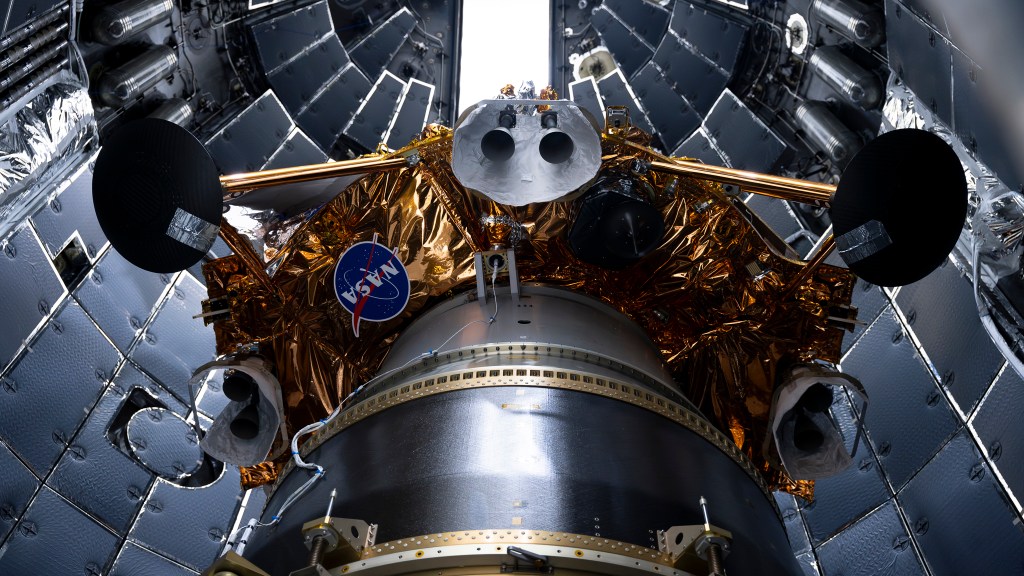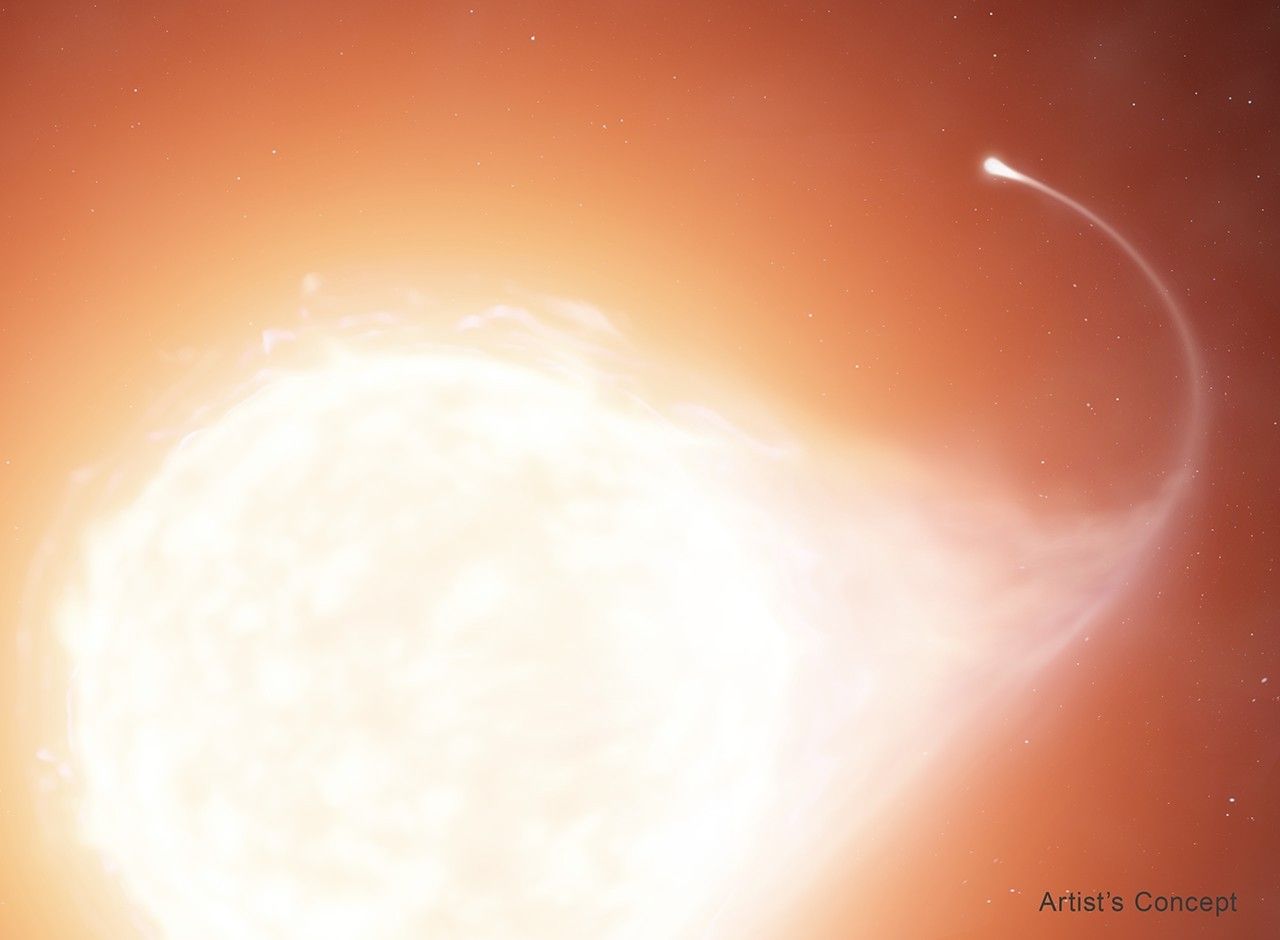Name: Jeffrey W. Kruk
Title: Project Scientist, Nancy Grace Roman Space Telescope
Formal Job Classification: Research astrophysicist
Organization: Code 665, Observational Cosmology Laboratory, Science Directorate
What do you do and what is most interesting about your role here at Goddard? How do you help support Goddard’s mission?
I am the project scientist for the Nancy Grace Roman Space Telescope. The role of the project scientist is to ensure that the mission achieves its scientific objectives. I work with everyone involved with the mission, from the scientists to the engineers to the managers.
What is most exciting about Roman?
Roman is NASA’s next big mission in astrophysics after the James Webb Space Telescope. Roman’s observatory will be the same size and sensitivity as Hubble. Roman differs from Hubble in that Roman is designed to do surveys. We can cover larger areas of the sky. Our field of view is 100 times larger than that of Hubble.
We can study certain scientific questions that Hubble cannot study. Roman can see the big picture in areas where Hubble will just see tantalizing glimpses. We will study cosmology, the large-scale structure of the universe and how it evolved, and also study exoplanet populations by using planets as gravitational lenses. These investigations require the large field of view of the Roman observatory.
Why did you decide to become an astrophysicist?
I was always interested in all kinds of physics. When I was a child, I thought planets were very cool. I had a four-inch telescope when I was a teenager, but the bright lights of Long Island where I grew up often obscured the stars.
I got a Bachelor of Science in physics from Princeton University. One of my advisers was John Wheeler, who was a very famous physicist especially in general relativity and black holes. His tenure at Princeton overlapped with that of Albert Einstein, which brought a personal connection one can’t get from a book. John thought about the theoretical implications of black holes and how one might observe them. At the time, no one had yet even confirmed their existence. He was the one who got me interested in relativity.
I have a Ph.D. in Physics from Yale University.
Why did you then detour into particle physics?
I liked working in the lab and building scientific hardware. Yale had a small particle accelerator. I started building electronics for the accelerator’s detector systems. I spent five and one-half years doing this.
I then went to Rice University and spent another six years on particle physics. I worked on the Brookhaven and Fermi Lab accelerators.
To do particle physics, you have to spend a great deal of your life in the particle physics laboratory. Most of the accelerators and the big detectors at the time were at ground level, not underground as they are now.
Why did you return to astrophysics?
My wife and I married the first year of graduate school. We had agreed from day one that we would not live apart for extended periods, and working in particle physics was requiring that ever more time be spent at the accelerator labs. I wanted to spend more time with my wife, so I decided to return to astrophysics.
What are the similarities between particle physics and astrophysics?
For both, you build state of the art equipment to do the experiment. If you are good at building one type of instrument, then it is easy for you to learn to build another type of instrument. I learned about the new types of instruments and how to build them quickly enough, but it took me years to teach myself astronomy.
When you returned to astrophysics, where did you go?
I became a research scientist in the astronomy department of Johns Hopkins University’s Homewood Campus. I joined a group there that was building and flying an ultraviolet instrument for the space shuttle.
I stayed 21 years.
After the second flight of the ultraviolet telescope, I joined the Far Ultraviolet Spectroscopic Explorer (FUSE) mission just as they were starting to build it. At one point or another, I worked on every aspect of this mission. I eventually became the deputy chief of observatory operations and the systems engineer. These were more technical positions than overall managing positions.
Why did you come to Goddard?
I came to Goddard in 2010. My last several years at Hopkins, I worked on mission concepts that became the Roman Space Telescope. Goddard was the place to be to continue working on Roman since Goddard is building and designing Roman.
I started as the deputy project scientist. In 2007, I became the project scientist.
As a project scientist, what is your management style?
I have an experimental background. Since at Hopkins I got involved in almost every aspect of two different missions, I understand the challenges the engineers have to solve. Because I have experience as a scientist using data, I understand what the users of Roman will need.
To manage, I stay in close contact with everybody all the time. I try to attend all the technical meetings, about 20 a week. My calendar is pretty much full. I also encourage everyone to contact me too. I have a project science team, which helps.
When technical issues arise, we explore two or three possible solutions. Then we do enough design work to decide which is best, also considering cost and schedule.
It is very rewarding to see all the pieces of a big project come together. As project scientist, I get to see this happen in real time.
Who were your mentors and what advice did they give you?
As I mentioned, John Wheeler was one of my mentors at Princeton. He was a theorist, a big picture person. He taught me was that there are so many different, creative ways to envision a challenge in physics.
My other mentor at Princeton was David Wilkinson. He was one of the world’s best experimentalists and instrument builders. He taught me more subtle things. He was just such an amazing example of someone to aspire to be. With Dave, I could see myself aspiring to do what he did.
As a mentor, what advice do you give?
My advice is to think very hard about what would make a satisfying career. When you are a student, you often do not even know all the options. As you get older, this may change as it did for me.
It is highly unlikely that what a student thinks they will be doing in 10 or 20 years is actually what they will be doing. You have to be flexible and open to your opportunities.
Is there something surprising about your hobbies that people do not generally know?
I enjoy woodworking, which has helped in my ongoing house renovation. I play tennis.
I also like birding. My wife and I have been birding in the Amazon basin, the Andes, Australia, and many places in North America.
My wife and I are also avid hikers. We have hiked up Kilimanjaro, the French and Swiss Alps, the Andes, Patagonia, and many places in the United States. We go anywhere we can go on our two feet.
Are you a reader?
Yes, my favorite genre is historical fiction. I like many authors. My favorite changes almost every day.
What is your “six-word memoir”? A six-word memoir describes something in just six words.
This is more than six words: It’s been a fun career. I’m still trying to figure out what I want to be when I grow up.
By Elizabeth M. Jarrell
NASA Goddard Space Flight Center





























